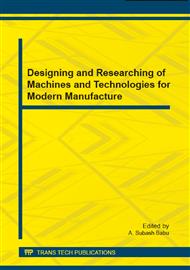p.190
p.196
p.200
p.205
p.210
p.215
p.219
p.227
p.237
Study on Lubrication Simulation and Capability of Three-Lobe Journal Bearing
Abstract:
The lubrication state of three-lobe bearing is simulated by using Reynolds equation. It concluded that the load-carrying capability of three-lobe bearing increases with the eccentric distance between the centers of axis and bearing with a nonlinear way. The largest bearing load-carrying capacity occurs in the eccentric direction of 30 °and making sure the eccentric direction can improve the stability of the system. To improve the rotation speed of the axis is beneficial to promote the load-carrying capacity.
Info:
Periodical:
Pages:
210-214
Citation:
Online since:
December 2014
Authors:
Price:
Сopyright:
© 2015 Trans Tech Publications Ltd. All Rights Reserved
Share:
Citation:


